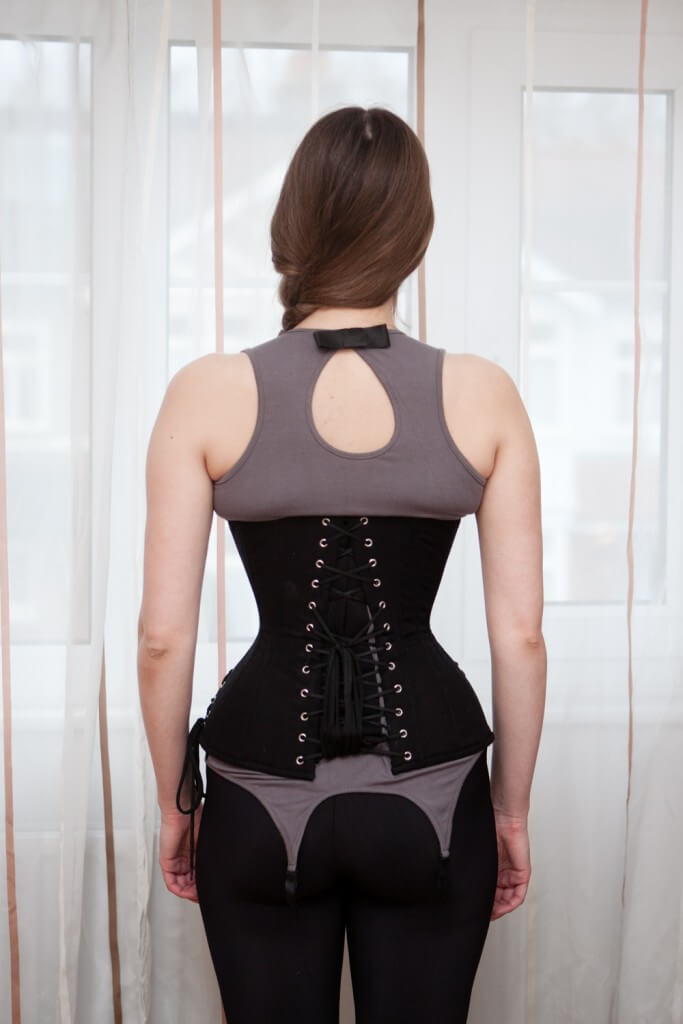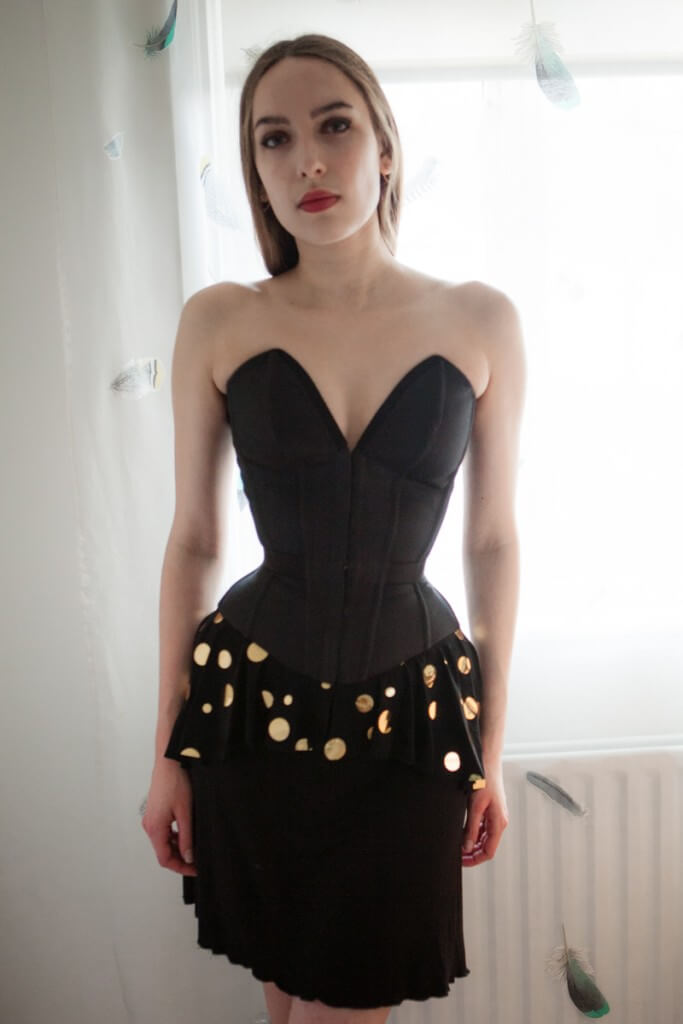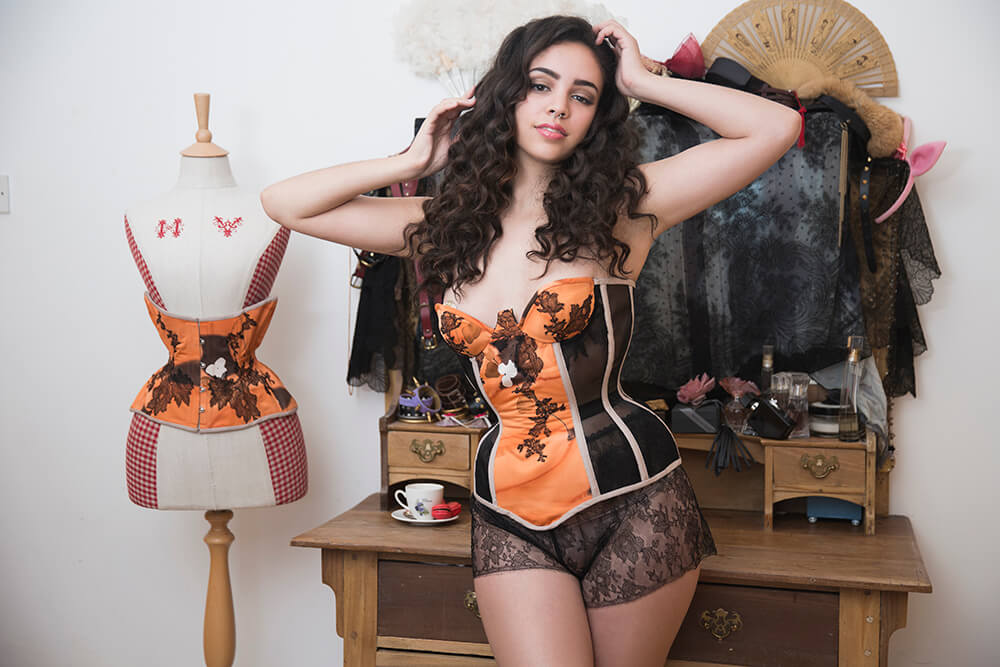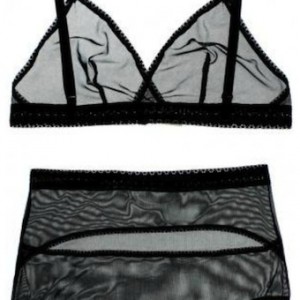Should You Season Your Corset?
Within the corset community, corset seasoning can be a bit of a contentious issue.
Among wearers and makers alike, there’s a distinct split between the individuals who insist upon it and those who think it’s unnecessary.
For those outside the community, the phrase can be a little confusing. I know that when I first encountered the term my immediate thoughts were of salt and pepper rather than any kind of garment!
What is Seasoning?
‘Seasoning’ a corset is essentially the process of breaking it in very slowly. As with bras and shoes, the longer that you wear a corset the more comfortable it should become. You could say this is common sense: the more a garment is worn, the more the fabrics will mould and fit your body specifically.
In the case of a garment as heavily structured and constricting as a corset though, this goes another way: the more the garment is worn, the more your body will also adjust to accommodate that corset.

A corset should be a good fit for your body from the first time you put it on. This Sparklewren corset was made in a standard size, but is still comfortable and sits flush against my body without the need for seasoning. Corset by Sparklewren. Lingerie by Karolina Laskowska. Photography by InaGlo Photography
The Hows and Whys of Seasoning
As a general rule though, corset seasoning is a lot more regimented than simply partaking in regular wear. As Marianne mentioned in her piece on corset ‘rules’, one of the more common methods is the ‘2-2-2 rule’: lacing your corset 2” closed for 2 hours a day for 2 weeks. It’s a process that requires discipline and commitment to your corset, beyond what you would expect in another piece of clothing.
The reasoning behind the ‘need’ for seasoning can vary, but the general gist tends to be that it aids the corset in fitting you properly, it prevents the corset from being damaged by being worn too tightly too quickly and it allows your body time to adjust to the constriction of the garment.

My first 'proper' corset was this Sian Hoffman longline girdle hybrid; I never seasoned it and was able to comfortably reduce my waist by 4" without any ill effect to myself or the corset.
Corset by Sian Hoffman
Photo by K Laskowska
I certainly can’t argue with the last of these points. Any corset that significantly alters to shape of the body isn’t something that should be taken lightly: if you are unexperienced in tightlacing, you especially need to listen to your body. If you are waist training, it can take extra time for your body to allow you to ‘size down’: rushing the process can cause you pain or even serious harm in the long run.
However, the arguments that seasoning is what will make your corset fit or will prevent it from damage such as broken stitching or popped seams is something that I take exception to.
Off-the-Rack Corsetry and the Rise of Seasoning
It isn’t particularly difficult to unravel why the seasoning process has become so popularised in recent years. The rise of affordable, off-the-rack corsetry has made these garments so much more accessible.
On the one hand, this is a wonderful thing: previously corsetry was a huge investment and out of reach for most individuals. Now even those with relatively little disposable income can share the joys of this shapewear.
Unfortunately, the nature of off-the-rack means that there’s a limit to the type of body shapes these pieces will work for. Everyone’s bodies are different: it’s not just a matter of ratio between waist and hip measurements, but even distribution of fat and muscle can affect how well you compress and how well a corset can fit.
Off the rack can never account for all of these idiosyncrasies: unless you’re experienced with that particular brand and your personal fit, you’ll be taking a gamble as to whether it will work for your personal shape.

This is the only corset that I have ever tried to season; even after several weeks, the garment was still the wrong fit for my body and extremely uncomfortable.
Corset by Orchard Corset
Photo by K Laskowska
The appeal of the seasoning process is that it promises to take care of these issues. Certain brands include the information on their websites. According to Orchard corset, ‘if you don’t break [your corset] in slowly, those steel bones may break through the fabric’. Meanwhile Romantasy implies that ‘placing too much pressure on the corset at the outset may damage the fabric or "pop" stitches’. Both of these scenarios can be terrifying if you’ve spent a lot of money on your corsets: I suspect this fear is part of what has popularised seasoning.
However, I object quite strongly to the idea that you must adhere to a strict breaking-in programme to prevent damage to your garment. No corset should ever pop a steel bone or have stitching break so quickly into wear.
The only scenarios in which this could occur are: 1) If the garment has been made with inappropriately loosely-woven fabric that isn’t strong enough to contain the steel bones or 2) If the garment was stitched with poor quality thread, too large stitches or a badly tensioned machine.
This sort of extreme damage would never be purely down to the garment being worn too tightly too quickly: it’s down to it being a badly made product. As a customer, if the seller tries to tell you that this kind of damage your fault you should be very wary.

My custom corset from Pop Antique is the most comfortable and well fitting corset that I own. I tightlaced with it from the moment that I received it. Even after extensive wear, the garment is in excellent condition and remains a wonderful fit.
Corset by Pop Antique
Photo by K Laskowska
The Truth on Seasoning and Fit
There’s also the argument that seasoning is needed to make a corset fit properly. This must be taken with a pinch of salt and applied reasonably. I cannot dispute that the more a corset is worn, the more comfortable it will become. However, for that to happen, the corset has to fit properly first. Even if you’re not ready to wear the waist at its full level of reduction, the hips and ribcage should still sit relatively flush against your body.
When worn over time, the fibres of the fabric will relax and mould to you. Your own body will get used to the compression of the corset, allowing you to tighten the waist. Having corsetry custom made should ensure that you get a good fit from the get go. Achieving this is a little more difficult with off the rack: it can take some time to find which silhouettes and reduction levels work for your body.
What has become most concerning about the seasoning trend is that it advocates wearing corsets that are completely ill fitting, on the promise that a slow breaking in process will make it adhere to you comfortably.
Wearing a corset with a too-big gap can actually cause more damage to the corset than seasoning claims to prevent: it can warp the flat bones at the centre back of the corset, as well as placing strain on seams that are too far forward on the body then they are designed to be.
This applies to corsets that are both too curvy (tight waist but loose ribcage and hips) and not curvy enough (tight on the ribcage and hips but without much waist reduction).
The latter is the biggest scenario that I see seasoning advocated for: many off-the-rack corset companies produce garments with a relatively straight and un-curvy fit. Despite claims, seasoning will not make the garment curvier or fit you, no matter how many hours you spend wearing it slowly.

The corsets that you see in photoshoots likely haven't been broken in at all yet often still fit the model well! Corsets and lingerie by Karolina Laskowska. Modelled by Yazzmin. Photography by Tigz Rice Studios.
The Last Word on Seasoning
In nearly a decade of corset wearing, I have only ever seasoned a single corset: it was an off-the-rack piece for a review, and the process of slow-breaking made no discernible difference to its fit or comfort. In fact, when it comes to my best fitting corsets, I’ve worn them tightly for extended periods of time upon receiving them, to no ill effect.
I remain wary of any corset maker that requires their product to be ‘seasoned’. Whether you’re shopping off-the-rack or custom, your corset should fit: after all, you wouldn’t expect to put a badly fitting bra or shoes under a slow breaking in regimen, so why should you do the same to your corset?
Have you ever seasoned a corset? Would you ever try this process with a new corset?







